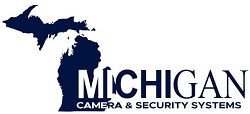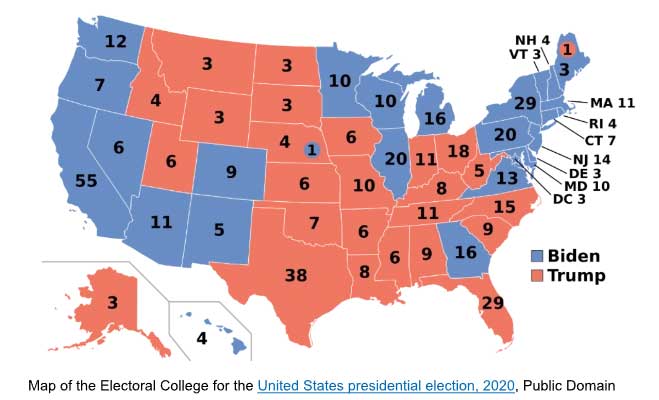Do Cameras at Polling Stations Increase Voter Trust?
Do Cameras at Polling Stations Increase Voter Trust?
Do Security Cameras at Polling Stations Increase or Undermine Voter Trust?
Do Security Cameras at Polling Stations Increase or Undermine Voter Trust? Michigan Camera Systems Blog: Use of Cameras/Webcams in Polling Stations.
According to a Pew Research survey conducted in 2020, 75% of Americans believed that there could be multiple foreign governments attempting to influence U.S. elections. The need for robust election security measures in today’s digital age is paramount to safeguard the integrity of the voting process. Concerns about potential interference, whether from foreign or domestic sources, have been a key issue since the controversial 2000 presidential election.
The Bush v. Gore case in 2000, which ended with a Supreme Court decision in favor of Bush, raised significant doubts about election results and set the stage for heightened scrutiny in subsequent election cycles, including the contentious 2016 and 2020 races where legal challenges were made to contest the outcomes.
Schmitt (2021), writing for the International Law Studies Journal, highlighted the prevalence of international election interference, citing Russia’s experience of being targeted by cyber-attacks from as many as 15 different countries. This underscores the vulnerability of even powerful nations to cyber threats against their electoral processes, emphasizing the urgent need for authorities to take proactive steps to counter such risks.
The Promise and Pitfalls of Security Cameras in Election Security
The use of technical and physical security surveillance is integral to safeguarding the election infrastructure and detecting any unusual activity during the election process. To enhance security measures for election documents and electronic devices, officials have implemented security cameras and cyber surveillance in and around storage facilities and computer systems. These measures are aimed at deterring unauthorized access and ensuring the integrity of ballot software and results, as well as other sensitive information stored in USB drives and electronic devices. Access to these materials is restricted to authorized personnel using key cards or designated entry methods, with each access being documented and archived for monitoring purposes.
Security Cameras for Transparency: Examples
In a recent piece by PBS’s NewsHour (2022), the significance of having security cameras at polling places was highlighted. The Georgia Secretary of State has pointed to security footage as evidence of unauthorized individuals accessing voting equipment. These individuals, with personal ties to former President Trump and allegations of election fraud, reportedly entered restricted areas without proper authorization and lingered for extended periods. This incident is part of an ongoing investigation by District Attorney Fani Willis in Fulton County, Georgia, probing potential illegal actions by Trump and his associates to sway the outcome of the 2020 election.
Additionally, Nierenberg (2023) reported on a case in Bridgeport, Connecticut, where voting results for a Democratic mayor were invalidated by a judge due to video evidence showing two women stuffing multiple ballots into drop-boxes. These individuals were supporters of the mayor, who had a past conviction for corruption during his previous tenure in office. The court found that election laws prohibiting the collection and mass submission of absentee ballots on behalf of others had been violated.
Governing Authority for video camera usage in election processes
The authority for regulating the use of video cameras in election processes primarily rests with the states, as outlined by the United States Senate. While federal policies focus on broader aspects of voting rights and election integrity, the states have the autonomy to establish guidelines regarding the use of video surveillance during elections.
State laws typically prohibit the use of video cameras in polling places to protect voter privacy and prevent potential manipulation of the electoral process. For example, in Texas, the Director of Elections has explicitly stated that all video or sound recording devices should be turned off in polling locations. Similarly, the NC State Board of Elections prohibits the use of devices for recording ballots, citing concerns about potential vote-buying schemes.
Overall, the decision to permit or restrict the use of video cameras in election processes lies with state authorities, who aim to uphold the integrity and privacy of the voting process. Federal agencies may provide guidelines, but the states ultimately determine the rules and regulations governing video surveillance in elections.
Privacy in voting
Privacy in voting is essential for both voters and officials. The National Institute of Standards and Technology has emphasized the importance of voters being able to mark, verify, and cast their ballots independently. With political tensions leading to threats and intimidation, it is understandable why individuals value the privacy of their votes.
Professor Juan Gilbert and his team at the University of Florida have explored using facial recognition technology to enhance voter identification and accessibility. While this innovation could benefit those unable to physically go to voting locations, there are concerns about the potential biases in the technology, particularly when it comes to accurately identifying individuals with darker skin tones.
While artificial intelligence, like facial recognition, may offer increased accessibility, it also introduces new cyber security risks. Hacking and unauthorized access are major concerns in voting security, especially with the involvement of AI technology. Additionally, there are worries that AI could contribute to spreading misinformation in electoral and political discussions.
The use of AI in political campaigns is a divisive issue, with a significant portion of both Republicans and Democrats expressing reservations about its use by political candidates. As technology continues to evolve, ensuring the security and privacy of voter information remains paramount in maintaining the integrity of the electoral process.
Conclusion
Ensuring the security of electoral data collection and voter privacy is of utmost importance, and measures are continually being improved and regulated. While security efforts at polling locations mainly involve authorized staff and human monitors, the use of security cameras is not widespread and is even criticized by some.
Top federal agencies are focused on addressing issues such as interference, intimidation, and disinformation, primarily in the cyber realm. The difference between technical and physical monitoring lies in the ability to capture every detail in a database versus relying on human observation, which can be subject to error.
Security cameras are commonly used in high-risk areas like hospitals, government buildings, and law enforcement settings due to their ability to provide evidence of criminal activity. Implementing video surveillance at polling locations can help maintain election integrity and address concerns surrounding criminal activities.
While no security measure will satisfy everyone, it is crucial for officials to choose logical and efficient methods to safeguard elections. Progressive tactics should be adopted cautiously and gradually to identify and resolve any issues that may arise.
Voters can educate themselves on electoral processes and legal requirements by seeking information from local and state election committees or federal resources. If voters witness illegal behavior or feel targeted unfairly, they are encouraged to contact authorities such as the FBI, DOJ, FEC, or EAC to address their concerns.
References
1. Adelphi University. (2022, October 5). Could Blockchain Revolutionize Voting? https://www.adelphi.edu/news/could-blockchain-revolutionize-voting/
2. AP-NORC Center for Public Affairs Research. (November 2023). There Is Bipartisan Concern About the Use of AI in the 2024 Elections. https://apnorc.org/projects/there-is-bipartisan-concern-about-the-use-of-ai-in-the-2024-elections
3. Australian Electoral Commission. (2023, November 28). Electoral Integrity Assurance Task Force. https://www.aec.gov.au/about_aec/electoral-integrity.htm
4. Cassidy, C. (2023, December 5). Voting experts warn of ‘serious threats’ for 2024 from election equipment software breaches. https://apnews.com/article/election-security-voting-machines-software-2024-80a23479d8a767ba9333b2324c4e424b
5. Center for Excellence in Polling. (2022, June 16). 2022 National Election Security Poll. https://excellenceinpolling.com/wp-content/uploads/2022/06/CEP-Polling-National-Election-Security-Poll-Crosstabs.pdf
6. Center for Tech and Civic Life. (2020, December 8). 30 Ways Election Officials Boost Voter Confidence and Trust. https://www.techandciviclife.org/boosting-voter-trust/
7. Coffey, Sarah. (2022, June 29). 2022 National Election Security Poll. Center for Excellence in Polling. https://excellenceinpolling.com/poll/2022-national-election-security-poll/
8. Gilbert, Juan, et. al. (2023, April 7). Evaluating New Technology for Equitable and Secure Voter Verification.
TechPolicy.press: https://www.techpolicy.press/evaluating-new-technology-for-equitable-and-secure-voter-verification/
Service and installation for these makes and models and more






